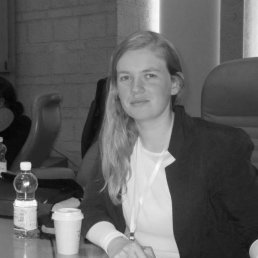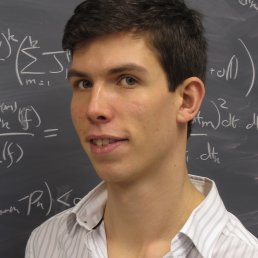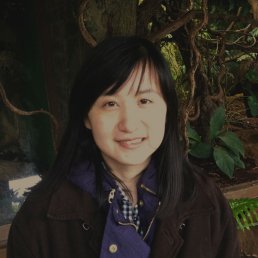North meets South Colloquium
Abstract
Categorification of knot polynomials -- Daniele Celoria

Classically, the most powerful and versatile knot invariants take the form of polynomials. These can usually be defined by simple recursive equations, known as skein relations; after giving the main examples of polynomial knot invariants (Alexander and Jones polynomials), we are going to informally introduce categorifications. Finally we are going to present the Knot Floer and the Khovanov homologies, and show that they provide a categorification of the aforementioned polynomial knot invariants.
Network science for online social media: an x-ray or a stethoscope for society -- Mariano Beguerisse

The abundance of data from social media outlets such as Twitter provides the opportunity to perform research at a societal level at a scale unforeseen. This has spurred the development of mathematical and computational methods such as network science, which uses the formalism and language of graph theory to study large systems of interacting agents. In this talk, I will provide a sketch of network science and its application to study online social media. A number of different networks can be constructed from Twitter data, which can be used to ask questions about users, ranging from the structural (an 'x-ray' to see how societies are connected online) to the topical ('stethoscope' to feel how users interact in the context of specific event). I will provide concrete examples from the UK riots of 2011, applications to medical anthropology, and political referenda, and will also highlight distinct challenges such as the directionality of connections, the size of the network, the use of temporal information and text, all of which are active areas of research.
North meets South Colloquium
Abstract
A continuum of expanders -- David Hume

Expanders are a holy grail of networking; robustly connected networks of arbitrary size which require minimal resources. Like the grail, they are also notoriously difficult to construct. In this talk I will introduce expanders, give a brief overview of just a few aspects of their diverse history, and outline a very recent result of mine, which states that there are a continuum of expanders with fundamentally different large-scale geometry.
What makes cities successful? A complex systems approach to modelling urban economies -- Neave O'Clery

Urban centres draw a diverse range of people, attracted by opportunity, amenities, and the energy of crowds. Yet, while benefiting from density and proximity of people, cities also suffer from issues surrounding crime, congestion and density. Seeking to uncover the mechanisms behind the success of cities using novel tools from the mathematical and data sciences, this work uses network techniques to model the opportunity landscape of cities. Under the theory that cities move into new economic activities that share inputs with existing capabilities, path dependent industrial diversification can be described using a network of industries. Edges represent shared necessary capabilities, and are empirically estimated via flows of workers moving between industries. The position of a city in this network (i.e., the subnetwork of its current industries) will determine its future diversification potential. A city located in a central well-connected region has many options, but one with only few peripheral industries has limited opportunities.
We develop this framework to explain the large variation in labour formality rates across cities in the developing world, using data from Colombia. We show that, as cities become larger, they move into increasingly complex industries as firms combine complementary capabilities derived from a more diverse pool of workers. We further show that a level of agglomeration equivalent to between 45 and 75 minutes of commuting time maximizes the ability of cities to generate formal employment using the variety of skills available. Our results suggest that rather than discouraging the expansion of metropolitan areas, cities should invest in transportation to enable firms to take advantage of urban diversity.
This talk will be based on joint work with Eduardo Lora and Andres Gomez at Harvard University.
North meets South Colloquium
Abstract
Approximate prime numbers -- James Maynard

I will talk about the idea of an 'almost prime' number, and how this can be used to make progress on some famous problems about the primes themselves.
Mathematical biology: An early career retrospective -- Thomas Woolley

Since 2008 Thomas has focused his attention to the application of mathematical techniques to biological problems. Through numerous fruitful collaborations he has been extremely fortunate to work alongside some amazing researchers. But what has he done in the last 8 years? What lessons has he learnt? What knowledge has he produced?
This talk will encompass a brief overview of a range of applications, from animal skin patterns to cellular mechanics, via zombies and Godzilla.
North meets South Colloquium
Abstract
What is the minimal size of a separating set? -- Emilie Dufresne
[[{"fid":"23334","view_mode":"media_square","fields":{"format":"media_square","field_file_image_alt_text[und][0][value]":"Emilie Dufresne","field_file_image_title_text[und][0][value]":"Emilie Dufresne"},"type":"media","attributes":{"alt":"Emilie Dufresne","title":"Emilie Dufresne","height":"258","width":"258","class":"media-element file-media-square"}}]]
Abstract: The problem of classifying objects up to certain allowed transformations figures prominently in almost all branches of Mathematics, and Invariants are used to decide if two objects are equivalent. A separating set is a set of invariants which achieve the desired classification. In this talk we take the point of view of Invariant Theory, where the objects correspond to points on an affine variety (often a vector space) and equivalence is given by the action of an algebraic group on this affine variety. We explain how the geometry and combinatorics of the group action govern the minimal size of separating sets.
Predator-Prey-Subsidy Dynamics and the Paradox of Enrichment on Networks -- Robert Van Gorder
[[{"fid":"23335","view_mode":"media_square","fields":{"format":"media_square","field_file_image_alt_text[und][0][value]":"Robert Van Gorder","field_file_image_title_text[und][0][value]":"Robert Van Gorder"},"type":"media","attributes":{"alt":"Robert Van Gorder","title":"Robert Van Gorder","height":"258","width":"258","class":"media-element file-media-square"}}]]
Abstract: The phrase "paradox of enrichment" was coined by Rosenzweig (1971) to describe the observation that increasing the food available to prey participating in predator-prey interactions can destabilize the predator's population. Subsequent work demonstrated that food-web connectance on networks can stabilize the predator-prey dynamics, thereby dampening the paradox of enrichment in networked domains (such as those used in stepping-stone models). However, when a resource subsidy is available to predators which migrate between nodes on such a network (as is actually observed in some real systems), we may show that predator-prey systems can exhibit a paradox of enrichment - induced by the motion of predators between nodes - provided that such networks are sufficiently densely connected.
A short guide to research impact
Abstract
Some relish the idea of working with users of research and having an impact on the outside world - some view it as a ridiculous government agenda which interferes with academic freedom. We’ll give an overview of the political and practical aspects of impact and identify things you might want to consider when deciding whether, and how, to get involved.
Talking to your audience
Abstract
How might you prepare talks for different audiences (specialised seminar, colloquium-style talk, talk to a non-mathematical audience, job interview)? Join us for advice on this, and on how to connect with your audience and get them to feel involved.
Speaking and listening
Abstract
What is the point of giving a talk? What is the point of going to a talk? In this presentation, which is intended to have a lot of audience participation, I would like to explore how one should prepare talks for different audiences and different occasions, and what one should try to get out of going to a talk.
Journals and metrics
Abstract
What is the purpose of journals? How should you choose what journal to submit a paper to? Should it be open access? And how would you like your work to be evaluated?
North meets South Colloquium
Abstract
Cluster algebras: from finite to infinite -- Sira Gratz

Abstract: Cluster algebras were introduced by Fomin and Zelevinsky at the beginning of this millennium. Despite their relatively young age, strong connections to various fields of mathematics - pure and applied - have been established; they show up in topics as diverse as the representation theory of algebras, Teichmüller theory, Poisson geometry, string theory, and partial differential equations describing shallow water waves. In this talk, following a short introduction to cluster algebras, we will explore their generalisation to infinite rank.
Modelling the effects of data streams using rough paths theory -- Hao Ni

Abstract: In this talk, we bring the theory of rough paths to the study of non-parametric statistics on streamed data and particularly to the problem of regression where the input variable is a stream of information, and the dependent response is also (potentially) a path or a stream. We explain how a certain graded feature set of a stream, known in the rough path literature as the signature of the path, has a universality that allows one to characterise the functional relationship summarising the conditional distribution of the dependent response. At the same time this feature set allows explicit computational approaches through linear regression. We give several examples to show how this low dimensional statistic can be effective to predict the effects of a data stream.

